新闻中心

Cluster is a leading provider of innovative and high-quality products in a variety of key categories. From home goods to electronics, Cluster offers a wide range of products to meet the needs of consumers around the world. In this article, we will explore some of the key product categories offered by Cluster and highlight the features and benefits of each.1. Home GoodsOne of the key product categories offered by Cluster is home goods. This category includes a wide range of products such as kitchen appliances, home decor, bedding, and furniture. Cluster offers a variety of high-quality home goods that are designed to enhance the functionality and aesthetics of any living space. Whether you are looking to upgrade your kitchen with a new set of cookware or add a touch of style to your bedroom with a new comforter set, Cluster has you covered.2. ElectronicsAnother key product category offered by Cluster is electronics. This category includes a wide range of products such as smartphones, laptops, tablets, and accessories. Cluster offers the latest technology products from top brands at competitive prices. Whether you are looking for a new smartphone with the latest features or a high-performance laptop for work or gaming, Cluster has a wide selection of electronics to choose from.3. FashionCluster also offers a key product category in fashion. This category includes a variety of clothing, shoes, and accessories for men, women, and children. Cluster offers a wide range of fashionable and trendy clothing items that are perfect for any occasion. Whether you are looking for a new outfit for a special event or simply want to update your wardrobe with the latest styles, Cluster has a diverse selection of fashion products to choose from.4. Beauty and Personal CareCluster also offers a key product category in beauty and personal care. This category includes a variety of skincare, haircare, and grooming products for men and women. Cluster offers a wide range of high-quality beauty and personal care products that are designed to help you look and feel your best. Whether you are looking for a new skincare routine, haircare products, or grooming essentials, Cluster has a variety of options to choose from.5. Sports and OutdoorsCluster also offers a key product category in sports and outdoors. This category includes a variety of products such as fitness equipment, outdoor gear, and sports accessories. Cluster offers a wide range of products that are designed to help you stay active and enjoy the great outdoors. Whether you are looking for a new set of dumbbells for your home gym or a new tent for your next camping trip, Cluster has a diverse selection of sports and outdoor products to choose from.In conclusion, Cluster offers a wide range of high-quality products in key categories such as home goods, electronics, fashion, beauty and personal care, and sports and outdoors. Whether you are looking to upgrade your home, update your wardrobe, or stay active and healthy, Cluster has a variety of products to meet your needs. With competitive prices and top brands, Cluster is a one-stop shop for all your shopping needs.

The global LED dot matrix market size is expected to reach $1.5 billion by 2026, growing at a CAGR of 5.8% during the forecast period. LED dot matrix displays are widely used in various applications such as outdoor advertising, traffic signs, information displays, and scoreboards due to their high brightness, energy efficiency, and long lifespan.LED dot matrix displays consist of a grid of LED pixels arranged in rows and columns, allowing for the display of text, graphics, and animations. These displays are commonly used in outdoor environments where high visibility is essential, such as on highways, in stadiums, and at airports. The increasing demand for digital signage and the growing trend of smart cities are driving the growth of the LED dot matrix market.One of the key factors driving the growth of the LED dot matrix market is the increasing adoption of digital signage in various industries. LED dot matrix displays are used for advertising and information purposes in retail stores, restaurants, transportation hubs, and other public spaces. These displays are highly customizable and can be easily updated with new content, making them a cost-effective and versatile solution for businesses looking to engage with customers.Another factor contributing to the growth of the LED dot matrix market is the rising demand for energy-efficient lighting solutions. LED dot matrix displays consume less power than traditional incandescent or fluorescent lights, making them an environmentally friendly option for businesses and municipalities. Additionally, the long lifespan of LED technology reduces maintenance costs and downtime, further driving the adoption of LED dot matrix displays.The automotive industry is also a significant driver of the LED dot matrix market, with LED displays being used in vehicles for dashboard displays, navigation systems, and entertainment systems. The increasing demand for connected cars and autonomous vehicles is expected to further boost the demand for LED dot matrix displays in the automotive sector.In terms of regional analysis, Asia Pacific is expected to dominate the LED dot matrix market due to the presence of key players in countries like China, Japan, and South Korea. The region is also witnessing rapid urbanization and infrastructure development, leading to increased demand for LED displays in public spaces and transportation systems.North America and Europe are also significant markets for LED dot matrix displays, driven by the growing adoption of digital signage in retail, hospitality, and transportation sectors. The increasing focus on energy efficiency and sustainability in these regions is further fueling the demand for LED technology.In conclusion, the global LED dot matrix market is poised for significant growth in the coming years, driven by the increasing adoption of digital signage, energy-efficient lighting solutions, and the growing demand for connected vehicles. With advancements in LED technology and the development of innovative display solutions, the market is expected to continue expanding and evolving to meet the needs of various industries and applications.
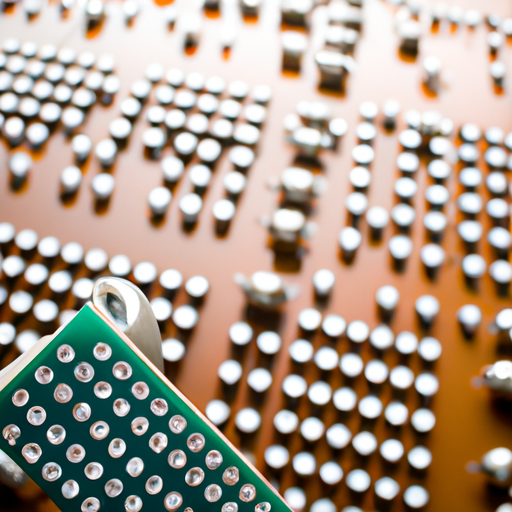
The LED dot matrix scenario encompasses a wide range of industries and applications, from advertising and signage to transportation and entertainment. LED dot matrix displays have become increasingly popular due to their versatility, energy efficiency, and ability to create eye-catching visuals. In this article, we will explore some of the key industries that are utilizing LED dot matrix technology and the benefits it offers.1. Advertising and Marketing:
One of the most common uses of LED dot matrix displays is in advertising and marketing. LED signs are a popular choice for businesses looking to attract customers and promote their products or services. LED dot matrix displays can be used to create dynamic and engaging advertisements that are sure to grab the attention of passersby. Whether it's a scrolling message, a flashing image, or a video display, LED dot matrix technology allows for endless possibilities in advertising.2. Transportation:
LED dot matrix displays are also widely used in the transportation industry. LED signs can be found on buses, trains, and other public transportation vehicles to provide passengers with important information such as upcoming stops, schedules, and safety messages. LED displays are also used on highways and roads to provide drivers with real-time traffic updates, weather alerts, and other important information. LED dot matrix technology has revolutionized the way information is communicated in the transportation sector, making it easier for passengers and drivers to stay informed.3. Entertainment:
LED dot matrix displays are a common sight in the entertainment industry, from concert venues and sports stadiums to theme parks and movie theaters. LED signs are used to create immersive experiences for audiences, with vibrant colors and dynamic visuals that enhance the overall entertainment experience. LED displays can be used to showcase live performances, display scores and statistics at sporting events, or create interactive exhibits at museums and theme parks. LED dot matrix technology has become an essential tool for creating memorable and engaging entertainment experiences.4. Retail:
In the retail industry, LED dot matrix displays are used to attract customers and enhance the shopping experience. LED signs can be found in storefronts, malls, and shopping centers, displaying promotions, sales, and other important information to shoppers. LED displays can also be used inside stores to showcase products, provide directions, and create a visually appealing environment. LED dot matrix technology allows retailers to create dynamic and engaging displays that help drive foot traffic and increase sales.5. Hospitality:
LED dot matrix displays are also commonly used in the hospitality industry, from hotels and restaurants to event venues and conference centers. LED signs can be used to welcome guests, provide directions, and display event schedules and information. LED displays can also be used to create ambiance and enhance the overall guest experience. LED dot matrix technology allows hospitality businesses to communicate effectively with guests and create a memorable and engaging environment.In conclusion, the LED dot matrix scenario encompasses a wide range of industries and applications, from advertising and marketing to transportation, entertainment, retail, and hospitality. LED dot matrix displays have become an essential tool for businesses looking to attract customers, communicate important information, and create engaging experiences for their audiences. With their versatility, energy efficiency, and eye-catching visuals, LED dot matrix displays are sure to continue to play a key role in a variety of industries in the years to come.
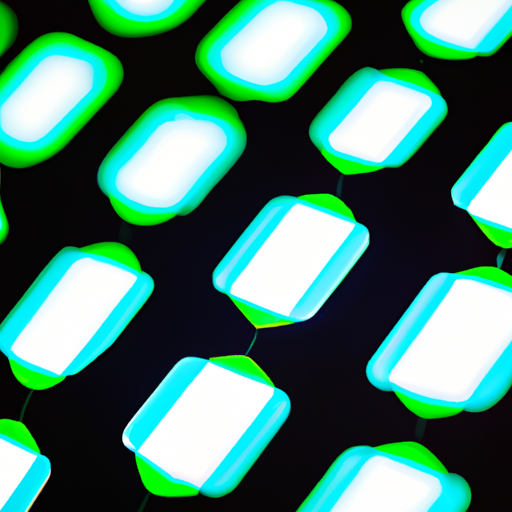
The LED dot matrix scenario encompasses a wide range of industries and applications, from advertising and signage to transportation and entertainment. LED dot matrix displays have become increasingly popular in recent years due to their versatility, energy efficiency, and ability to create eye-catching visuals. In this article, we will explore some of the key industries that are utilizing LED dot matrix technology and the benefits it offers.1. Advertising and Signage:
One of the most common uses of LED dot matrix displays is in advertising and signage. LED displays are highly visible and can be easily customized to display text, graphics, and animations. This makes them ideal for outdoor advertising, billboards, and storefront signage. LED dot matrix displays are also commonly used in indoor settings such as retail stores, airports, and shopping malls to promote products and services.LED displays are a cost-effective and low-maintenance solution for advertising and signage. They are durable, long-lasting, and can be easily updated with new content. LED dot matrix displays are also energy-efficient, consuming less power than traditional lighting sources. This makes them an environmentally friendly option for businesses looking to reduce their carbon footprint.2. Transportation:
LED dot matrix displays are widely used in the transportation industry for traffic signs, bus and train schedules, and information displays. LED displays are highly visible in all lighting conditions, making them ideal for outdoor applications such as highway signs and traffic signals. LED dot matrix displays are also used in public transportation systems to provide real-time information to passengers about arrival times, delays, and route changes.LED displays are a reliable and efficient way to communicate information to the public. They can be easily programmed to display text, symbols, and graphics, making them versatile for a variety of transportation applications. LED dot matrix displays are also durable and weather-resistant, making them suitable for outdoor use in harsh environments.3. Entertainment:
LED dot matrix displays are commonly used in the entertainment industry for stage lighting, digital billboards, and video walls. LED displays are capable of producing vibrant colors and high-resolution images, making them ideal for creating immersive visual experiences. LED dot matrix displays are often used in concert venues, sports stadiums, and theme parks to enhance the overall entertainment experience for audiences.LED displays are a versatile and dynamic lighting solution for entertainment applications. They can be easily programmed to create custom lighting effects, animations, and video content. LED dot matrix displays are also energy-efficient, consuming less power than traditional lighting sources. This makes them a cost-effective option for entertainment venues looking to enhance their visual displays.4. Retail and Hospitality:
LED dot matrix displays are increasingly being used in retail and hospitality settings to attract customers and enhance the overall shopping experience. LED displays can be used to showcase products, promotions, and branding messages in a visually appealing way. LED dot matrix displays are commonly used in retail stores, restaurants, and hotels to create a modern and engaging atmosphere for customers.LED displays are a versatile and eye-catching solution for retail and hospitality applications. They can be easily customized to display dynamic content that captures the attention of customers. LED dot matrix displays are also energy-efficient, consuming less power than traditional lighting sources. This makes them a cost-effective option for businesses looking to enhance their visual displays without increasing their energy costs.In conclusion, the LED dot matrix scenario encompasses a wide range of industries and applications, from advertising and signage to transportation and entertainment. LED displays offer a versatile, energy-efficient, and visually appealing solution for businesses looking to enhance their visual displays and communicate information effectively to their customers. As LED technology continues to advance, we can expect to see even more innovative uses of LED dot matrix displays in various industries in the future.
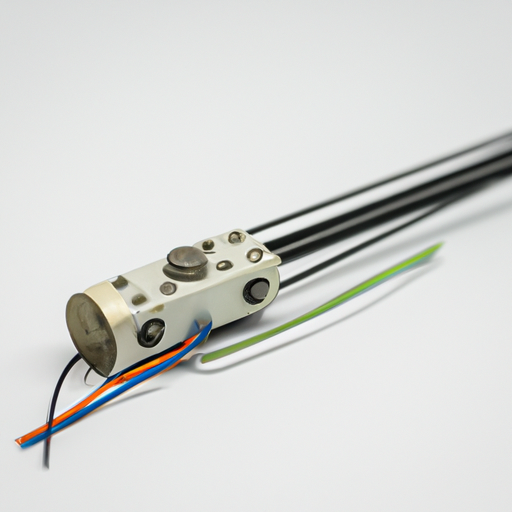
Laser diode products play a crucial role in a wide range of practical applications across various industries. From telecommunications to healthcare, laser diodes have become an essential component in many devices and systems. In this article, we will explore the role of laser diode products in practical applications and how they have revolutionized the way we live and work.Laser diodes are semiconductor devices that generate coherent light through the process of stimulated emission. They are compact, efficient, and versatile, making them ideal for a wide range of applications. One of the most common uses of laser diodes is in telecommunications. They are used in fiber optic communication systems to transmit data over long distances at high speeds. Laser diodes are also used in optical storage devices such as CD and DVD players, as well as in barcode scanners and laser printers.In the healthcare industry, laser diodes are used in a variety of medical devices and procedures. They are used in laser surgery to cut, cauterize, or vaporize tissue with precision and minimal damage to surrounding tissue. Laser diodes are also used in dermatology for procedures such as hair removal, skin resurfacing, and tattoo removal. In ophthalmology, laser diodes are used in procedures such as LASIK surgery to correct vision problems.Laser diodes are also used in industrial applications such as laser cutting, welding, and marking. In manufacturing, laser diodes are used to cut and engrave materials such as metal, plastic, and wood with high precision and speed. They are also used in 3D printing to cure photopolymer resins and create intricate structures layer by layer. In the automotive industry, laser diodes are used in sensors for autonomous vehicles, as well as in headlight systems for improved visibility and safety.In the field of defense and security, laser diodes are used in laser rangefinders, target designators, and laser weapons. They are also used in lidar systems for remote sensing and mapping applications. In aerospace, laser diodes are used in navigation systems, communication systems, and satellite payloads. They are also used in space exploration missions for tasks such as laser ranging and communication with Earth.In the field of research and development, laser diodes are used in spectroscopy, microscopy, and other scientific instruments. They are used in environmental monitoring to measure air quality, water quality, and greenhouse gas emissions. In the field of entertainment, laser diodes are used in laser light shows, laser projectors, and laser displays for concerts, events, and theme parks.Overall, laser diode products have revolutionized the way we live and work by enabling new technologies and applications across various industries. Their compact size, efficiency, and versatility make them an essential component in many devices and systems. As technology continues to advance, the role of laser diode products in practical applications will only continue to grow and evolve.

The purchase price of the latest laser diode can vary depending on the specific model and manufacturer. However, on average, the cost of a high-quality laser diode can range from $50 to $500 or more. Laser diodes are a type of semiconductor device that emits a coherent beam of light through the process of stimulated emission. They are commonly used in a wide range of applications, including telecommunications, medical devices, industrial manufacturing, and scientific research.One of the key factors that determine the price of a laser diode is its power output. Higher power laser diodes are typically more expensive than lower power ones, as they require more complex manufacturing processes and materials. Additionally, the wavelength of the laser diode can also impact its price, with certain wavelengths being more difficult and costly to produce.Another factor that can influence the cost of a laser diode is its packaging. Laser diodes are typically housed in a protective casing that helps to maintain their performance and reliability. The type of packaging used, such as TO-Can, butterfly, or chip-on-submount, can affect the overall cost of the laser diode.In addition to power output and packaging, the quality and reliability of the laser diode can also impact its price. Higher quality laser diodes that are manufactured to strict specifications and standards are generally more expensive than lower quality ones. This is because they are more likely to have a longer lifespan and better performance, making them a more reliable investment in the long run.Furthermore, the brand and reputation of the manufacturer can also play a role in the price of a laser diode. Established companies with a track record of producing high-quality laser diodes may charge a premium for their products, while lesser-known manufacturers may offer more affordable options.Overall, the purchase price of the latest laser diode can vary depending on a variety of factors, including power output, wavelength, packaging, quality, and manufacturer. It is important to carefully consider these factors when selecting a laser diode for a specific application, as choosing the right one can have a significant impact on performance and reliability.

When it comes to product training for visible light products, there are several key considerations that need to be taken into account in order to ensure that the training is effective and successful. Visible light products, such as LED lights, are becoming increasingly popular due to their energy efficiency and long lifespan. However, in order for customers to fully understand and appreciate the benefits of these products, it is essential that they receive thorough and comprehensive training.One of the first considerations when developing product training for visible light products is to understand the target audience. This includes not only the end users of the products, but also any sales staff or distributors who will be selling the products. It is important to tailor the training to the specific needs and knowledge levels of each group in order to ensure that the information is relevant and engaging.Another important consideration is the content of the training itself. This should include information on the features and benefits of the visible light products, as well as any technical specifications or installation instructions. It is also important to provide hands-on training whenever possible, as this can help to reinforce the information and make it more memorable for participants.In addition to the content of the training, it is also important to consider the format in which it will be delivered. This could include in-person training sessions, online webinars, or even interactive e-learning modules. The format should be chosen based on the needs and preferences of the target audience, as well as any logistical considerations such as budget or time constraints.It is also important to consider the timing of the training. Ideally, product training should be provided before the visible light products are launched or made available to customers. This will give sales staff and distributors the opportunity to familiarize themselves with the products and be prepared to answer any questions that customers may have.Another important consideration is the evaluation of the training. This could include quizzes or assessments to test participants' knowledge, as well as feedback forms to gather input on the effectiveness of the training. This information can then be used to make any necessary adjustments or improvements to future training sessions.Finally, it is important to consider the ongoing support and resources that will be available to participants after the training is complete. This could include access to a help desk or technical support team, as well as additional training materials or resources that can be accessed as needed.In conclusion, there are several key considerations that need to be taken into account when developing product training for visible light products. By understanding the target audience, creating relevant content, choosing the right format, timing the training appropriately, evaluating the effectiveness, and providing ongoing support, companies can ensure that their training is successful and helps to drive sales and customer satisfaction.

Ultraviolet (UV) radiation is a form of electromagnetic radiation that is invisible to the human eye. It is present in sunlight and is responsible for causing sunburn, skin aging, and skin cancer. UV radiation is divided into three categories based on wavelength: UVA, UVB, and UVC. Each type of UV radiation has different effects on the skin and can cause various health problems.UVA radiation has the longest wavelength and can penetrate deep into the skin. It is responsible for causing skin aging, wrinkles, and sagging. UVA radiation can also suppress the immune system and increase the risk of skin cancer. UVB radiation has a shorter wavelength than UVA and primarily affects the outer layers of the skin. It is responsible for causing sunburn, skin redness, and skin cancer. UVB radiation is also a major contributor to the development of cataracts and other eye problems.UVC radiation has the shortest wavelength and is the most harmful type of UV radiation. It is absorbed by the ozone layer and does not reach the Earth's surface. However, UVC radiation can be produced artificially by certain devices, such as germicidal lamps used for disinfection. Exposure to UVC radiation can cause severe skin burns, eye damage, and even death.UV radiation can have both beneficial and harmful effects on the human body. Small amounts of UV radiation are necessary for the production of vitamin D, which is essential for bone health and immune function. However, excessive exposure to UV radiation can cause serious health problems, including skin cancer, cataracts, and premature aging.Protecting the skin from UV radiation is essential for maintaining healthy skin and reducing the risk of skin cancer. The best way to protect the skin from UV radiation is to use sunscreen with a high SPF, wear protective clothing, and seek shade during peak sun hours. It is also important to avoid tanning beds and other sources of artificial UV radiation, as they can increase the risk of skin cancer.In recent years, there has been a growing concern about the depletion of the ozone layer, which acts as a natural filter for UV radiation. The ozone layer is being damaged by the release of certain chemicals, such as chlorofluorocarbons (CFCs), which are used in refrigerants and aerosol sprays. As a result, more UV radiation is reaching the Earth's surface, increasing the risk of skin cancer and other health problems.In conclusion, UV radiation is a powerful form of electromagnetic radiation that can have both beneficial and harmful effects on the human body. It is important to protect the skin from UV radiation by using sunscreen, wearing protective clothing, and avoiding artificial sources of UV radiation. By taking these precautions, we can reduce the risk of skin cancer and other health problems associated with UV radiation.

Infrared technology has become increasingly popular in recent years, with a wide range of products now available on the market. From home security systems to medical devices, infrared technology is being used in a variety of applications to improve our daily lives. In this article, we will explore some of the most popular infrared product types and how they are being used in different industries.1. Infrared CamerasOne of the most common uses of infrared technology is in the form of infrared cameras. These cameras are able to capture images using infrared radiation, which is invisible to the human eye. Infrared cameras are used in a variety of applications, including security surveillance, firefighting, and medical imaging.In the security industry, infrared cameras are often used to monitor buildings and outdoor spaces. These cameras are able to detect heat signatures, allowing security personnel to identify potential threats even in low-light conditions. Infrared cameras are also used in firefighting to help firefighters locate hot spots and people trapped in burning buildings.In the medical field, infrared cameras are used for a variety of purposes, including diagnosing medical conditions and monitoring patients. Infrared cameras can be used to detect changes in body temperature, which can be an indicator of infection or inflammation. Infrared cameras are also used in cosmetic surgery to monitor blood flow and tissue perfusion during procedures.2. Infrared ThermometersInfrared thermometers are another popular infrared product type that is used in a variety of industries. These devices are able to measure temperature without making physical contact with the object being measured. Infrared thermometers are commonly used in food service, automotive, and HVAC industries.In the food service industry, infrared thermometers are used to monitor food temperatures during cooking and storage. These devices are able to quickly and accurately measure the temperature of food without the need for physical contact, reducing the risk of contamination. Infrared thermometers are also used in the automotive industry to monitor engine temperatures and diagnose mechanical issues.In the HVAC industry, infrared thermometers are used to measure the temperature of heating and cooling systems. These devices can help HVAC technicians identify areas of heat loss or gain, allowing them to make adjustments to improve energy efficiency. Infrared thermometers are also used in building inspections to identify areas of heat loss or moisture intrusion.3. Infrared SaunasInfrared saunas are a popular wellness product that uses infrared radiation to heat the body directly, rather than heating the air around the body. Infrared saunas are believed to have a variety of health benefits, including detoxification, pain relief, and relaxation.Infrared saunas are often used as a natural therapy for chronic pain conditions, such as arthritis and fibromyalgia. The heat from the infrared radiation is believed to help relax muscles and improve circulation, reducing pain and inflammation. Infrared saunas are also used for detoxification, as the heat can help the body sweat out toxins and impurities.Infrared saunas are available in a variety of styles and sizes, ranging from portable units that can be used at home to larger units that are found in spas and wellness centers. Some infrared saunas also include additional features, such as chromotherapy lighting and sound therapy, to enhance the relaxation experience.4. Infrared Heating PanelsInfrared heating panels are a popular heating solution that uses infrared radiation to heat objects and people directly, rather than heating the air in a room. These panels are often used as a more energy-efficient alternative to traditional heating systems, as they can provide targeted heat where it is needed most.Infrared heating panels are commonly used in residential and commercial buildings to provide supplemental heat in areas that are difficult to heat with traditional heating systems. These panels can be installed on walls or ceilings and are available in a variety of sizes and styles to suit different heating needs.Infrared heating panels are also used in outdoor spaces, such as patios and garages, to provide warmth during colder months. These panels are able to heat objects and people directly, rather than heating the air, making them an efficient heating solution for outdoor areas.5. Infrared Therapy DevicesInfrared therapy devices are a popular wellness product that uses infrared radiation to provide therapeutic benefits to the body. These devices are often used to relieve pain, reduce inflammation, and improve circulation.Infrared therapy devices come in a variety of forms, including handheld devices, heating pads, and body wraps. These devices emit infrared radiation that penetrates deep into the body, stimulating blood flow and promoting healing. Infrared therapy devices are commonly used to treat conditions such as arthritis, muscle pain, and sports injuries.Infrared therapy devices are also used in skincare and beauty treatments, as the heat from the infrared radiation can help improve skin tone and texture. These devices are often used in conjunction with other skincare products to enhance their effectiveness.In conclusion, infrared technology has become increasingly popular in a variety of industries, with a wide range of products now available on the market. From infrared cameras to infrared saunas, these products are being used to improve security, health, and wellness in our daily lives. As technology continues to advance, we can expect to see even more innovative uses of infrared technology in the future.
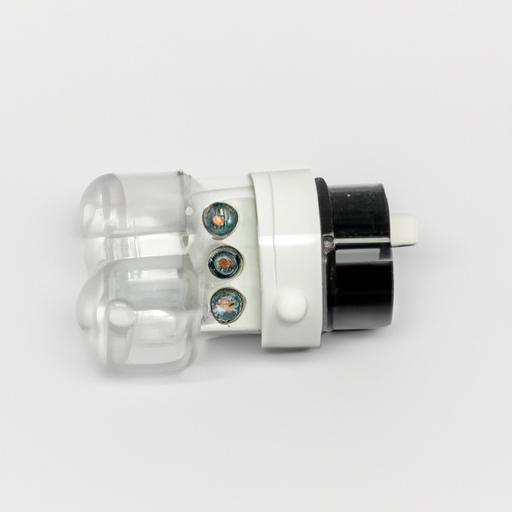
The LED transmitter scenario encompasses a wide range of industries that are involved in the production, distribution, and utilization of LED technology. LED transmitters are devices that use light-emitting diodes (LEDs) to transmit data wirelessly, offering a more efficient and secure method of communication compared to traditional radio frequency (RF) transmitters. This technology has the potential to revolutionize various industries and applications, from telecommunications and internet connectivity to healthcare and automotive.One of the key industries that will be impacted by the adoption of LED transmitters is the telecommunications sector. With the increasing demand for high-speed and reliable data transmission, LED transmitters offer a promising solution for improving the efficiency and security of wireless communication networks. By using light waves to transmit data, LED transmitters can achieve higher data rates and lower latency compared to RF transmitters, making them ideal for applications such as 5G networks, smart cities, and Internet of Things (IoT) devices.Another industry that stands to benefit from the adoption of LED transmitters is the healthcare sector. LED transmitters can be used in medical devices and equipment to enable wireless communication between healthcare professionals and patients, as well as between different medical devices. This technology can improve the efficiency of healthcare delivery, enhance patient monitoring and care, and enable remote consultations and telemedicine services. LED transmitters can also be used in healthcare facilities to track and manage medical equipment, supplies, and personnel, improving operational efficiency and patient safety.The automotive industry is another sector that can leverage the benefits of LED transmitters. LED transmitters can be integrated into vehicles to enable wireless communication between different components, such as sensors, cameras, and control systems. This technology can enhance the performance, safety, and connectivity of vehicles, enabling features such as autonomous driving, vehicle-to-vehicle communication, and real-time traffic information. LED transmitters can also be used in smart transportation systems to improve traffic management, reduce congestion, and enhance road safety.The entertainment industry is also poised to benefit from the adoption of LED transmitters. LED transmitters can be used in lighting fixtures, displays, and projection systems to create immersive and interactive experiences for audiences. This technology can enhance the visual quality, flexibility, and energy efficiency of lighting and display systems, enabling new forms of entertainment and artistic expression. LED transmitters can also be used in virtual reality (VR) and augmented reality (AR) applications to enable wireless communication between devices and sensors, enhancing the user experience and enabling new forms of interactive storytelling.In conclusion, the LED transmitter scenario encompasses a wide range of industries that can benefit from the adoption of LED technology. From telecommunications and healthcare to automotive and entertainment, LED transmitters offer a promising solution for improving the efficiency, security, and connectivity of various applications and systems. By leveraging the benefits of LED transmitters, industries can enhance their products and services, drive innovation and growth, and create new opportunities for collaboration and development.
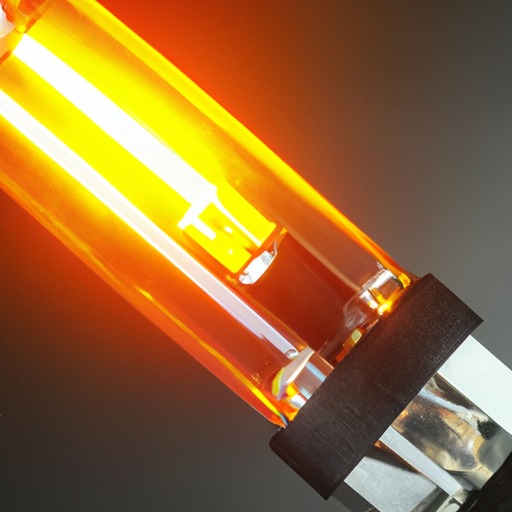
LED transmitters are a crucial component in modern technology, enabling the transmission of data through light signals. These transmitters are used in a variety of applications, from wireless communication systems to indoor positioning systems. In this article, we will explore what LED transmitters are, how they work, and their importance in the world of technology.LED transmitters, also known as light-emitting diode transmitters, are devices that use light-emitting diodes (LEDs) to transmit data. LEDs are semiconductor devices that emit light when an electric current passes through them. LED transmitters use this property to convert electrical signals into light signals, which can then be transmitted wirelessly to a receiver.LED transmitters are commonly used in optical wireless communication systems, where data is transmitted through light signals instead of radio waves. This technology offers several advantages over traditional radio frequency communication, including higher data rates, lower interference, and increased security. LED transmitters are also used in indoor positioning systems, where they can be used to track the location of objects or people within a confined space.One of the key components of an LED transmitter is the LED itself. LEDs are available in a variety of colors and power ratings, allowing for flexibility in designing a transmitter for a specific application. The LED is typically driven by a driver circuit, which controls the current flowing through the LED to modulate the light signal. The driver circuit may also include additional components, such as amplifiers or filters, to improve the performance of the transmitter.In addition to the LED and driver circuit, an LED transmitter may also include a lens or optical element to focus the light signal and improve its transmission range. The transmitter may also include a housing or enclosure to protect the components from environmental factors and provide mechanical support.LED transmitters are typically paired with a receiver, which is used to detect and decode the light signals transmitted by the transmitter. The receiver may include a photodetector, such as a photodiode or phototransistor, to convert the light signal back into an electrical signal. The receiver may also include signal processing circuitry to extract the data from the received signal and decode it for further processing.LED transmitters are used in a wide range of applications, including wireless communication systems, indoor positioning systems, and optical data links. In wireless communication systems, LED transmitters can be used to establish point-to-point or point-to-multipoint links between devices, providing high-speed data transfer with low latency. In indoor positioning systems, LED transmitters can be used to track the location of objects or people within a building, enabling applications such as asset tracking or indoor navigation.Overall, LED transmitters play a crucial role in modern technology, enabling the transmission of data through light signals. These transmitters offer several advantages over traditional radio frequency communication, including higher data rates, lower interference, and increased security. As technology continues to advance, LED transmitters are likely to play an increasingly important role in enabling new and innovative applications in wireless communication and indoor positioning.
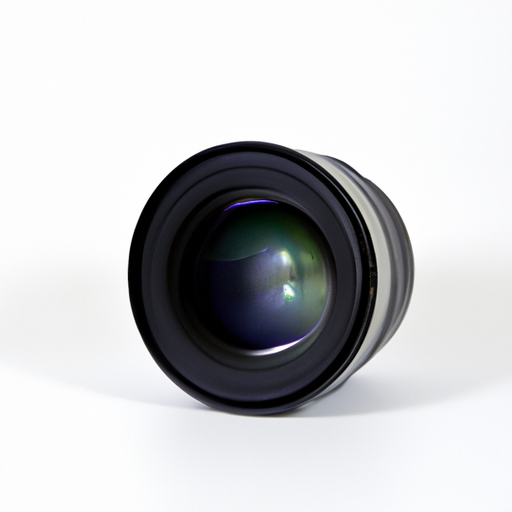
When it comes to photography, the lens is one of the most important components of a camera. It is responsible for capturing light and focusing it onto the camera's sensor, creating the image that we see. There are many different types of lenses available on the market, each with its own unique features and capabilities. In this article, we will explore some of the most popular lens product models that are currently available.1. Canon EF 50mm f/1.8 STM LensThe Canon EF 50mm f/1.8 STM lens is a popular choice among photographers for its versatility and affordability. This lens is known for its sharpness and fast autofocus, making it ideal for portrait photography, street photography, and low-light shooting. The wide aperture of f/1.8 allows for beautiful background blur, also known as bokeh, which can help to isolate your subject and create stunning images.2. Nikon AF-S NIKKOR 50mm f/1.8G LensSimilar to the Canon 50mm f/1.8 lens, the Nikon AF-S NIKKOR 50mm f/1.8G lens is a favorite among photographers for its sharpness and fast autofocus. This lens is compatible with Nikon DSLR cameras and is great for capturing portraits, landscapes, and everyday moments. The wide aperture of f/1.8 allows for excellent low-light performance and beautiful bokeh.3. Sony FE 24-70mm f/2.8 GM LensThe Sony FE 24-70mm f/2.8 GM lens is a high-quality zoom lens that is popular among professional photographers. This lens offers a versatile focal length range of 24-70mm, making it ideal for a wide range of shooting situations, from landscapes to portraits to events. The fast aperture of f/2.8 allows for excellent low-light performance and beautiful background blur.4. Tamron 70-200mm f/2.8 Di VC USD G2 LensThe Tamron 70-200mm f/2.8 Di VC USD G2 lens is a popular telephoto zoom lens that is known for its sharpness and image stabilization. This lens is great for capturing sports, wildlife, and events, thanks to its versatile focal length range of 70-200mm. The fast aperture of f/2.8 allows for excellent low-light performance and beautiful background blur.5. Sigma 35mm f/1.4 DG HSM Art LensThe Sigma 35mm f/1.4 DG HSM Art lens is a popular prime lens that is known for its sharpness and beautiful bokeh. This lens is great for capturing portraits, landscapes, and everyday moments, thanks to its versatile focal length of 35mm. The wide aperture of f/1.4 allows for excellent low-light performance and stunning background blur.6. Fujifilm XF 35mm f/2 R WR LensThe Fujifilm XF 35mm f/2 R WR lens is a popular prime lens that is designed for Fujifilm X-series mirrorless cameras. This lens is known for its compact size, weather sealing, and sharpness. The versatile focal length of 35mm makes it great for capturing portraits, landscapes, and everyday moments. The wide aperture of f/2 allows for excellent low-light performance and beautiful background blur.7. Olympus M.Zuiko Digital ED 12-40mm f/2.8 PRO LensThe Olympus M.Zuiko Digital ED 12-40mm f/2.8 PRO lens is a popular zoom lens that is designed for Micro Four Thirds mirrorless cameras. This lens offers a versatile focal length range of 12-40mm, making it ideal for a wide range of shooting situations. The fast aperture of f/2.8 allows for excellent low-light performance and beautiful background blur. The lens is also weather-sealed, making it great for outdoor photography.8. Panasonic Lumix G 25mm f/1.7 ASPH LensThe Panasonic Lumix G 25mm f/1.7 ASPH lens is a popular prime lens that is designed for Micro Four Thirds mirrorless cameras. This lens is known for its compact size, sharpness, and fast autofocus. The versatile focal length of 25mm makes it great for capturing portraits, landscapes, and everyday moments. The wide aperture of f/1.7 allows for excellent low-light performance and beautiful background blur.In conclusion, there are many popular lens product models available on the market, each with its own unique features and capabilities. Whether you are a beginner or a professional photographer, there is a lens out there that will suit your needs and help you capture stunning images. Consider your shooting style, budget, and camera system when choosing a lens, and don't be afraid to try out different models to find the perfect one for you.

Display borders are an essential element in the design of any visual display. They serve to frame the content of the display, providing structure and organization to the information being presented. Display borders can come in a variety of styles, colors, and materials, each serving a specific purpose in enhancing the overall aesthetic appeal of the display.One of the most common types of display borders is the traditional black frame. This classic design is simple and understated, allowing the content of the display to take center stage. Black frames are versatile and can be used in a variety of settings, from art galleries to trade show booths.Another popular option for display borders is the sleek and modern metal frame. Metal frames are often used in professional settings, such as corporate offices or conference rooms, where a more polished and sophisticated look is desired. Metal frames can come in a variety of finishes, including chrome, brushed aluminum, and matte black, allowing for customization to match the overall design aesthetic of the space.For a more playful and whimsical display border, colorful frames are a great option. Brightly colored frames can add a pop of color to an otherwise neutral display, drawing attention to the content within. These frames are often used in retail settings, where attracting customers' attention is key to driving sales.In addition to traditional frame styles, display borders can also be made from a variety of materials, including wood, plastic, and fabric. Wood frames are a popular choice for more rustic or traditional settings, adding warmth and texture to the display. Plastic frames are lightweight and durable, making them a practical choice for high-traffic areas. Fabric borders can add a soft and tactile element to the display, creating a more inviting and cozy atmosphere.When choosing a display border, it is important to consider the overall design aesthetic of the space in which it will be used. The border should complement the content of the display, enhancing its visual appeal without overpowering it. It is also important to consider the durability and maintenance requirements of the border, especially in high-traffic areas where it may be subject to wear and tear.In conclusion, display borders are an essential element in the design of any visual display. They serve to frame the content of the display, providing structure and organization to the information being presented. Display borders can come in a variety of styles, colors, and materials, each serving a specific purpose in enhancing the overall aesthetic appeal of the display. Whether you choose a classic black frame, a sleek metal frame, or a colorful border, the right display border can elevate the look of your display and make a lasting impression on your audience.
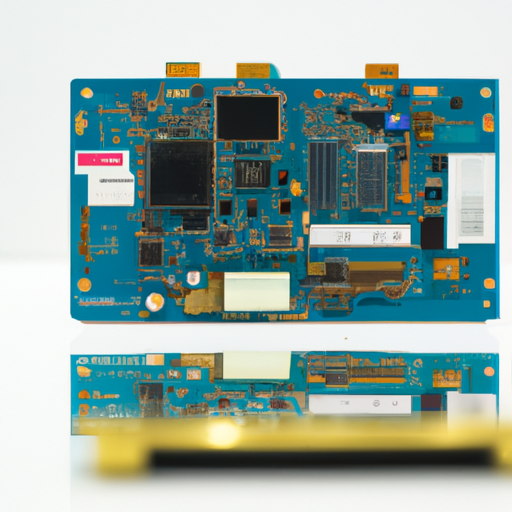
Display modules are essential components in a wide range of electronic devices, from smartphones and tablets to digital cameras and smartwatches. These modules are responsible for presenting information, images, and videos to users in a clear and visually appealing manner. In this article, we will explore the key product features of display modules and how they contribute to the overall user experience.1. Display TechnologyOne of the most important features of display modules is the type of display technology used. There are several different types of display technologies available, each with its own set of advantages and disadvantages. Some of the most common display technologies include LCD (Liquid Crystal Display), OLED (Organic Light-Emitting Diode), and AMOLED (Active Matrix Organic Light-Emitting Diode).LCD displays are known for their high brightness and energy efficiency, making them ideal for use in devices that require long battery life. OLED displays, on the other hand, offer superior color reproduction and contrast ratios, making them ideal for applications where image quality is paramount. AMOLED displays combine the best of both worlds, offering high brightness, energy efficiency, and superior color reproduction.2. ResolutionAnother important feature of display modules is the resolution, which refers to the number of pixels that make up the display. The higher the resolution, the sharper and more detailed the images and text will appear on the screen. Display modules with higher resolutions are particularly important for devices that are used for viewing high-definition content, such as smartphones, tablets, and televisions.Common resolutions for display modules include HD (1280x720 pixels), Full HD (1920x1080 pixels), and 4K (3840x2160 pixels). Higher resolution displays are becoming increasingly popular as consumers demand sharper and more detailed images on their devices.3. SizeThe size of the display module is another important feature to consider when choosing a display for a particular device. Display modules come in a wide range of sizes, from small displays used in smartwatches and fitness trackers to large displays used in televisions and computer monitors.The size of the display module will depend on the intended use of the device. For example, smartphones and tablets typically have smaller displays to make them more portable and easy to use on the go. On the other hand, televisions and computer monitors have larger displays to provide a more immersive viewing experience.4. Touchscreen CapabilityMany display modules come with touchscreen capability, allowing users to interact with the device by touching the screen directly. Touchscreen displays have become increasingly popular in recent years, as they offer a more intuitive and user-friendly interface compared to traditional button-based interfaces.There are two main types of touchscreen displays: resistive and capacitive. Resistive touchscreens use pressure-sensitive technology to detect touch input, while capacitive touchscreens use electrical signals to detect touch input. Capacitive touchscreens are generally more responsive and accurate than resistive touchscreens, making them ideal for devices that require precise touch input, such as smartphones and tablets.5. Refresh RateThe refresh rate of a display module refers to how many times the screen is updated per second. A higher refresh rate results in smoother motion and reduced motion blur, making it ideal for applications such as gaming and video playback.Common refresh rates for display modules include 60Hz, 120Hz, and 240Hz. Higher refresh rates are becoming increasingly popular in gaming monitors and televisions, as they provide a more immersive and responsive gaming experience.6. Viewing AngleThe viewing angle of a display module refers to the angle at which the screen can be viewed without a significant loss of image quality. Displays with wider viewing angles are able to maintain consistent color accuracy and brightness even when viewed from off-center angles.Wide viewing angles are particularly important for devices that are used by multiple users or in environments where the screen may be viewed from different angles. IPS (In-Plane Switching) displays are known for their wide viewing angles and are commonly used in smartphones, tablets, and computer monitors.7. DurabilityDurability is another important feature to consider when choosing a display module for a particular device. Display modules are exposed to a wide range of environmental factors, such as temperature fluctuations, humidity, and physical impact, which can affect their performance and longevity.Display modules with durable construction materials, such as Corning Gorilla Glass, are able to withstand scratches, cracks, and other forms of damage. Some display modules also come with water and dust resistance, making them ideal for use in outdoor and rugged environments.In conclusion, display modules are essential components in a wide range of electronic devices, providing users with a clear and visually appealing interface for interacting with their devices. By considering the key product features of display modules, such as display technology, resolution, size, touchscreen capability, refresh rate, viewing angle, and durability, manufacturers can create devices that offer a superior user experience and meet the demands of today's consumers.

A display module is a crucial component in many electronic devices, serving as the interface between the user and the device itself. From smartphones to smartwatches, from laptops to televisions, display modules are everywhere, providing us with the visual information we need to interact with our devices effectively.In this article, we will explore what a display module is, how it works, and why it is such an essential part of modern technology.What is a Display Module?A display module is a hardware component that is responsible for presenting visual information to the user. It typically consists of a screen or panel that can display text, images, videos, and other types of visual content. Display modules come in various sizes and technologies, such as LCD (liquid crystal display), OLED (organic light-emitting diode), and LED (light-emitting diode).How Does a Display Module Work?The basic principle behind how a display module works is relatively simple. The module receives electrical signals from the device's processor, which are then converted into visual information that is displayed on the screen. This process involves the manipulation of pixels, the smallest units of display on the screen, to create the desired images or text.Different types of display technologies work in slightly different ways. For example, LCD displays use liquid crystals to modulate light passing through them, while OLED displays use organic compounds that emit light when an electric current is applied. LED displays, on the other hand, use light-emitting diodes to produce light directly.Why is a Display Module Important?Display modules play a crucial role in modern technology for several reasons. Firstly, they provide us with the visual feedback we need to interact with our devices effectively. Whether we are browsing the internet on our smartphones, watching a movie on our laptops, or playing a video game on our gaming consoles, the display module is what allows us to see and interact with the content.Secondly, display modules contribute to the overall user experience of a device. A high-quality display module can make the content on the screen look sharp, vibrant, and lifelike, enhancing the user's enjoyment of the device. On the other hand, a low-quality display module can make the content appear dull, blurry, and unappealing, detracting from the user experience.Lastly, display modules are also essential for the functionality of certain devices. For example, in a smartwatch or fitness tracker, the display module is what allows the user to see their step count, heart rate, and other health metrics in real-time. In a car's dashboard, the display module is what shows the driver important information such as speed, fuel level, and navigation directions.In conclusion, display modules are a vital component in modern technology, enabling us to interact with our devices visually and enhancing the overall user experience. As technology continues to advance, display modules will likely become even more sophisticated and integral to the devices we use every day.
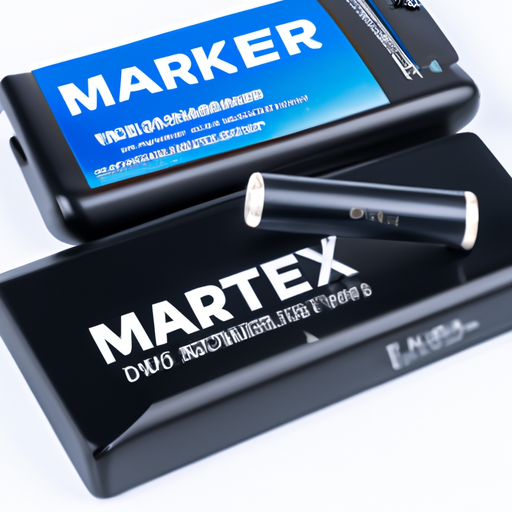
Non-charging battery technology is a revolutionary innovation that has the potential to disrupt the energy storage market. Unlike traditional batteries that require regular charging to function, non-charging batteries are designed to operate without the need for external power sources. This technology has the potential to revolutionize the way we store and use energy, offering a more sustainable and efficient solution for a wide range of applications.One of the key market policies that non-charging battery technology is likely to impact is the pricing of energy storage solutions. Traditional batteries are typically expensive to manufacture and require regular maintenance and replacement, making them a costly option for many consumers and businesses. Non-charging batteries, on the other hand, have the potential to be more cost-effective and efficient, offering a more affordable and sustainable alternative for energy storage.Another market policy that non-charging battery technology is likely to influence is the regulation of energy storage systems. As the demand for energy storage solutions continues to grow, regulators are increasingly focused on ensuring the safety and reliability of these systems. Non-charging batteries offer a more reliable and stable energy storage solution, reducing the risk of accidents and malfunctions that can occur with traditional batteries. This technology has the potential to streamline the regulatory process for energy storage systems, making it easier for consumers and businesses to adopt these solutions.In addition to pricing and regulation, non-charging battery technology is also likely to impact the market policies surrounding energy efficiency and sustainability. Traditional batteries are often made from toxic materials and can have a negative impact on the environment. Non-charging batteries, on the other hand, are designed to be more sustainable and environmentally friendly, offering a cleaner and more efficient energy storage solution. This technology has the potential to drive a shift towards more sustainable energy storage practices, helping to reduce carbon emissions and mitigate the impacts of climate change.Overall, non-charging battery technology has the potential to revolutionize the energy storage market, offering a more cost-effective, reliable, and sustainable solution for a wide range of applications. As this technology continues to develop and mature, it is likely to have a significant impact on market policies surrounding pricing, regulation, energy efficiency, and sustainability. By embracing non-charging battery technology, policymakers can help to drive innovation and accelerate the transition towards a more sustainable energy future.
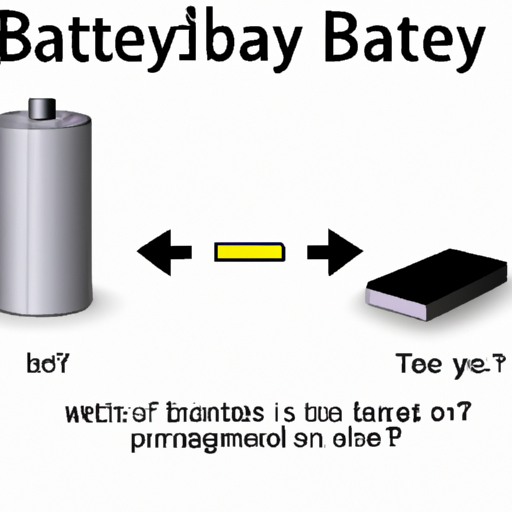
Battery technology has come a long way since its inception, with advancements in materials, design, and manufacturing processes leading to more efficient and longer-lasting batteries. From the early days of lead-acid batteries to the more recent developments in lithium-ion technology, batteries have become an essential component of our daily lives, powering everything from smartphones and laptops to electric vehicles and renewable energy systems.In this article, we will explore the different types of batteries, their characteristics, and applications, as well as the challenges and opportunities facing the battery industry.Types of BatteriesThere are several types of batteries available on the market, each with its own unique characteristics and applications. Some of the most common types of batteries include:1. Lead-Acid Batteries: Lead-acid batteries are one of the oldest and most widely used types of batteries. They are commonly found in cars, motorcycles, and uninterruptible power supply (UPS) systems. Lead-acid batteries are known for their low cost, high energy density, and reliability, making them a popular choice for a wide range of applications.2. Lithium-Ion Batteries: Lithium-ion batteries are the most popular type of rechargeable batteries used in consumer electronics, electric vehicles, and renewable energy systems. They are known for their high energy density, long cycle life, and fast charging capabilities. Lithium-ion batteries come in various chemistries, including lithium cobalt oxide (LCO), lithium iron phosphate (LFP), and lithium nickel manganese cobalt oxide (NMC), each with its own set of advantages and disadvantages.3. Nickel-Metal Hydride (NiMH) Batteries: NiMH batteries are commonly used in hybrid vehicles, cordless power tools, and portable electronics. They offer a good balance of energy density, power output, and cycle life, making them a suitable choice for applications that require high energy storage capacity.4. Nickel-Cadmium (NiCd) Batteries: NiCd batteries were once widely used in portable electronics and power tools but have been largely replaced by newer battery technologies due to their lower energy density and toxic cadmium content. However, NiCd batteries are still used in some applications where high discharge rates and long cycle life are required.5. Alkaline Batteries: Alkaline batteries are non-rechargeable batteries commonly used in household devices such as remote controls, flashlights, and toys. They are known for their long shelf life, low cost, and high energy density, making them a convenient power source for everyday use.Characteristics of BatteriesBatteries are characterized by several key parameters that determine their performance and suitability for different applications. Some of the most important characteristics of batteries include:1. Energy Density: Energy density refers to the amount of energy that a battery can store per unit volume or weight. Batteries with high energy density can store more energy in a smaller and lighter package, making them ideal for portable devices and electric vehicles.2. Power Density: Power density is the rate at which a battery can deliver energy. Batteries with high power density can provide a large amount of power quickly, making them suitable for applications that require high power output, such as electric vehicles and power tools.3. Cycle Life: Cycle life refers to the number of charge-discharge cycles that a battery can undergo before its capacity degrades to a certain level. Batteries with long cycle life can be recharged and used multiple times, reducing the need for frequent replacements.4. Charging Time: Charging time is the amount of time it takes to fully recharge a battery. Batteries with fast charging capabilities can be recharged quickly, allowing for shorter downtime and increased productivity.5. Safety: Safety is a critical consideration when choosing a battery, especially for applications where the risk of fire or explosion is a concern. Batteries with built-in safety features, such as thermal management systems and overcharge protection, can help prevent accidents and ensure safe operation.Applications of BatteriesBatteries are used in a wide range of applications across various industries, providing portable power solutions for devices and equipment that require energy storage. Some of the most common applications of batteries include:1. Consumer Electronics: Batteries are used in smartphones, laptops, tablets, and wearable devices to provide portable power for everyday use. Lithium-ion batteries are the most popular choice for consumer electronics due to their high energy density and long cycle life.2. Electric Vehicles: Batteries play a crucial role in powering electric vehicles, providing the energy needed to drive the vehicle and operate its onboard systems. Lithium-ion batteries are the preferred choice for electric vehicles due to their high energy density and fast charging capabilities.3. Renewable Energy Systems: Batteries are used in renewable energy systems, such as solar panels and wind turbines, to store excess energy for later use. Energy storage systems help balance supply and demand, ensuring a reliable and stable power supply.4. Backup Power Systems: Batteries are used in backup power systems, such as UPS systems and emergency lighting, to provide temporary power during outages or emergencies. Lead-acid batteries are commonly used in backup power applications due to their reliability and low cost.5. Medical Devices: Batteries are used in medical devices, such as pacemakers, defibrillators, and insulin pumps, to provide reliable and long-lasting power for critical healthcare applications. Lithium-ion batteries are often used in medical devices due to their high energy density and long cycle life.Challenges and OpportunitiesDespite the advancements in battery technology, the industry still faces several challenges that need to be addressed to further improve battery performance and sustainability. Some of the key challenges facing the battery industry include:1. Cost: The cost of batteries remains a significant barrier to widespread adoption, especially in applications that require large-scale energy storage, such as electric vehicles and renewable energy systems. Lowering the cost of batteries through advancements in materials and manufacturing processes is essential to make them more affordable and accessible.2. Energy Density: While lithium-ion batteries offer high energy density compared to other types of batteries, there is still room for improvement to increase the energy storage capacity and extend the range of electric vehicles. Research and development efforts are focused on developing new materials and chemistries to enhance energy density and performance.3. Recycling and Sustainability: The disposal of batteries poses environmental challenges due to the toxic chemicals and heavy metals they contain. Recycling and reusing batteries can help reduce waste and minimize the environmental impact of battery production and disposal. Developing sustainable battery technologies, such as solid-state batteries and flow batteries, can also help address these concerns.4. Safety: Safety is a critical consideration in battery design and manufacturing, especially for high-energy applications such as electric vehicles and grid storage systems. Improving battery safety through the use of advanced materials, thermal management systems, and safety features can help prevent accidents and ensure reliable operation.Despite these challenges, the battery industry presents significant opportunities for growth and innovation, driven by the increasing demand for portable power solutions and the transition to clean energy sources. Advancements in battery technology, such as solid-state batteries, lithium-sulfur batteries, and flow batteries, hold promise for improving energy storage capacity, efficiency, and sustainability.ConclusionBattery technology has evolved significantly over the years, from the early days of lead-acid batteries to the more recent developments in lithium-ion technology. Batteries play a crucial role in powering a wide range of devices and equipment, providing portable power solutions for consumer electronics, electric vehicles, renewable energy systems, and more.As the demand for energy storage continues to grow, the battery industry faces challenges in terms of cost, energy density, recycling, and safety. However, these challenges also present opportunities for innovation and growth, with advancements in materials, design, and manufacturing processes driving the development of new and improved battery technologies.By addressing these challenges and seizing these opportunities, the battery industry can continue to drive progress towards a more sustainable and energy-efficient future, powering the devices and systems that shape our daily lives.

Cigaretteer components are essential parts of a cigarette-making machine that help in the production of high-quality cigarettes. These components play a crucial role in ensuring the smooth operation of the machine and the consistent production of cigarettes. There are several popular Cigaretteer component product types that are widely used in the industry. In this article, we will discuss some of these popular product types and their importance in the cigarette manufacturing process.1. Cigarette Making Machines:Cigarette making machines are the heart of any cigarette manufacturing process. These machines are responsible for rolling and shaping the tobacco into cigarettes. There are different types of cigarette making machines available in the market, including manual, semi-automatic, and fully automatic machines. These machines come with various features and capabilities to meet the specific requirements of cigarette manufacturers.2. Cigarette Filters:Cigarette filters are an essential component of a cigarette that helps in reducing the amount of tar and nicotine that smokers inhale. Filters are made from cellulose acetate or other materials and are attached to the end of the cigarette to trap harmful substances before they reach the smoker's lungs. Filters come in different sizes, shapes, and colors to cater to the preferences of smokers.3. Cigarette Paper:Cigarette paper is another important component of a cigarette that is used to wrap the tobacco and create the cigarette shape. Cigarette paper is made from a blend of wood pulp and other materials to provide the right balance of strength, porosity, and burn rate. There are different types of cigarette paper available in the market, including regular, ultra-thin, and flavored papers.4. Cigarette Tubes:Cigarette tubes are pre-rolled paper tubes that are used to fill tobacco and create cigarettes. These tubes come in various sizes and shapes to accommodate different types of tobacco and cigarette-making machines. Cigarette tubes are an essential component for cigarette manufacturers who produce filtered cigarettes.5. Cigarette Filters Making Machines:Cigarette filters making machines are used to produce cigarette filters in large quantities. These machines are designed to automate the process of making filters, including cutting, shaping, and attaching filters to cigarettes. Filters making machines come in different sizes and capacities to meet the production needs of cigarette manufacturers.6. Cigarette Packaging Machines:Cigarette packaging machines are used to pack cigarettes into boxes or cartons for distribution and sale. These machines are designed to handle different sizes and shapes of cigarette packs and can be customized to meet specific packaging requirements. Packaging machines help in streamlining the packaging process and ensuring the quality and consistency of the final product.7. Cigarette Wrapping Machines:Cigarette wrapping machines are used to wrap cigarettes in foil or paper to protect them from moisture and other external factors. These machines are designed to handle different sizes and shapes of cigarettes and can be customized to meet specific wrapping requirements. Wrapping machines help in preserving the freshness and quality of cigarettes during storage and transportation.In conclusion, Cigaretteer component product types play a crucial role in the cigarette manufacturing process. These components are essential for producing high-quality cigarettes that meet the expectations of smokers. By investing in the right Cigaretteer components, cigarette manufacturers can improve the efficiency, consistency, and quality of their production process. It is important to choose reliable and reputable suppliers for Cigaretteer components to ensure the smooth operation of the manufacturing process.
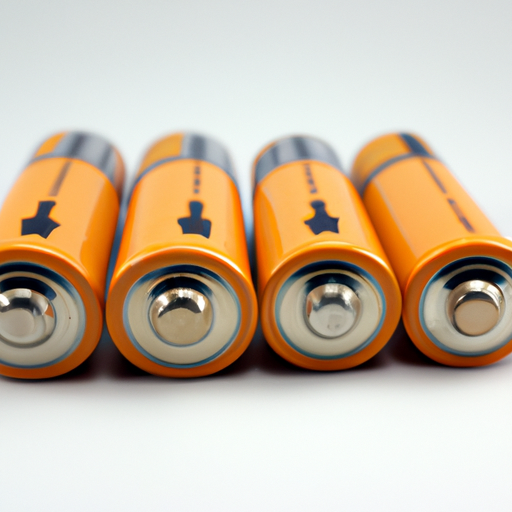
The battery contact 111 industry is currently experiencing significant growth and innovation as demand for batteries continues to rise across various sectors. Battery contacts are essential components in electronic devices, providing a reliable connection between the battery and the device to ensure proper functionality. As technology advances and the need for portable power sources increases, the battery contact industry is poised for continued expansion and development.One of the key drivers of growth in the battery contact industry is the increasing adoption of rechargeable batteries in consumer electronics, electric vehicles, and renewable energy systems. Rechargeable batteries offer a more sustainable and cost-effective power solution compared to traditional disposable batteries, leading to a surge in demand for battery contacts that can withstand frequent charging cycles and provide a secure connection.In addition, the rise of electric vehicles (EVs) and energy storage systems has created new opportunities for battery contact manufacturers. EVs rely on high-performance batteries to power their electric motors, and battery contacts play a crucial role in ensuring the efficient transfer of power from the battery to the vehicle's electrical system. As the automotive industry shifts towards electrification, the demand for high-quality battery contacts is expected to increase significantly.Furthermore, the growing popularity of portable electronic devices such as smartphones, laptops, and wearables has also contributed to the growth of the battery contact industry. These devices require compact and reliable battery contacts to ensure seamless power delivery and optimal performance. As consumers continue to demand smaller and more powerful devices, manufacturers are under pressure to develop innovative battery contact solutions that meet the evolving needs of the market.In response to these trends, battery contact manufacturers are investing in research and development to create new and improved products that offer enhanced performance, durability, and efficiency. Advanced materials such as beryllium copper and phosphor bronze are being used to produce battery contacts with superior conductivity and corrosion resistance, ensuring a reliable connection between the battery and the device.Moreover, advancements in manufacturing technologies such as precision stamping, laser welding, and automated assembly have enabled manufacturers to produce battery contacts with tighter tolerances and higher levels of consistency. This has led to the development of custom-designed battery contacts that can meet the specific requirements of different applications, from medical devices to industrial equipment.The battery contact industry is also benefiting from the increasing focus on sustainability and environmental responsibility. Many manufacturers are incorporating eco-friendly materials and processes into their production methods to reduce their carbon footprint and minimize waste. By adopting green practices, battery contact manufacturers are not only meeting regulatory requirements but also appealing to environmentally conscious consumers who prioritize sustainability in their purchasing decisions.Looking ahead, the battery contact industry is expected to continue its growth trajectory as the demand for batteries and portable power sources continues to rise. With advancements in technology, materials, and manufacturing processes, battery contact manufacturers are well-positioned to meet the evolving needs of the market and drive innovation in the industry.In conclusion, the battery contact industry is experiencing a period of rapid growth and transformation driven by the increasing demand for batteries in various sectors. As technology advances and consumer preferences evolve, manufacturers are investing in research and development to create innovative battery contact solutions that offer superior performance, reliability, and sustainability. With a focus on quality, efficiency, and environmental responsibility, the battery contact industry is poised for continued success in the years to come.
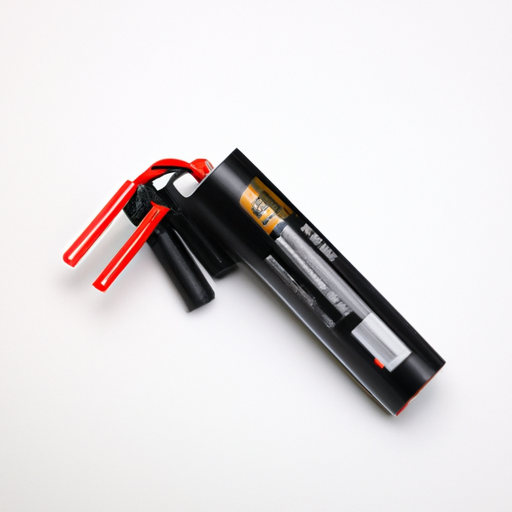
The battery clip is a crucial component in many electronic devices, providing a secure connection between the battery and the device. It is typically made of metal, such as stainless steel or nickel-plated steel, to ensure durability and conductivity. The battery clip consists of several components and modules that work together to hold the battery in place and maintain a stable electrical connection. In this article, we will explore the various components and modules that make up a battery clip and their functions.1. Spring: The spring is one of the most important components of a battery clip. It provides the necessary tension to hold the battery securely in place and maintain a constant electrical connection. The spring is typically made of stainless steel or another durable metal that can withstand repeated use without losing its elasticity.2. Contact plate: The contact plate is the part of the battery clip that comes into direct contact with the battery terminals. It is usually made of a highly conductive material, such as copper or brass, to ensure a reliable electrical connection. The contact plate is designed to fit snugly against the battery terminals to minimize resistance and prevent any loss of power.3. Insulating material: The insulating material is used to prevent the battery clip from short-circuiting or causing damage to the battery. It is typically made of a non-conductive material, such as plastic or rubber, that can withstand high temperatures and resist corrosion. The insulating material is placed between the contact plate and the spring to ensure that only the battery terminals come into contact with the metal components of the battery clip.4. Mounting bracket: The mounting bracket is used to secure the battery clip to the device or circuit board. It is typically made of metal or plastic and is designed to provide a stable and secure attachment point for the battery clip. The mounting bracket may include screws, clips, or other fastening mechanisms to ensure that the battery clip remains in place during use.5. Terminal connector: The terminal connector is the part of the battery clip that connects to the device or circuit board. It is typically a metal pin or socket that provides a secure electrical connection between the battery clip and the device. The terminal connector may be soldered, crimped, or otherwise attached to the battery clip to ensure a reliable connection.6. Protective cover: The protective cover is used to shield the battery clip from external elements, such as dust, moisture, or physical damage. It is typically made of a durable material, such as plastic or rubber, that can withstand harsh conditions without compromising the performance of the battery clip. The protective cover may be removable or integrated into the design of the battery clip to provide added protection.7. Wire leads: The wire leads are used to connect the battery clip to the device or circuit board. They are typically made of insulated copper wire that can carry electrical current without short-circuiting or causing damage. The wire leads may be soldered, crimped, or otherwise attached to the battery clip to ensure a secure and reliable connection.In conclusion, the battery clip is a complex component that consists of several components and modules working together to provide a secure and reliable connection between the battery and the device. Each component plays a crucial role in ensuring that the battery clip functions properly and maintains a stable electrical connection. By understanding the various components and modules of a battery clip, manufacturers can design and produce high-quality battery clips that meet the needs of their customers.